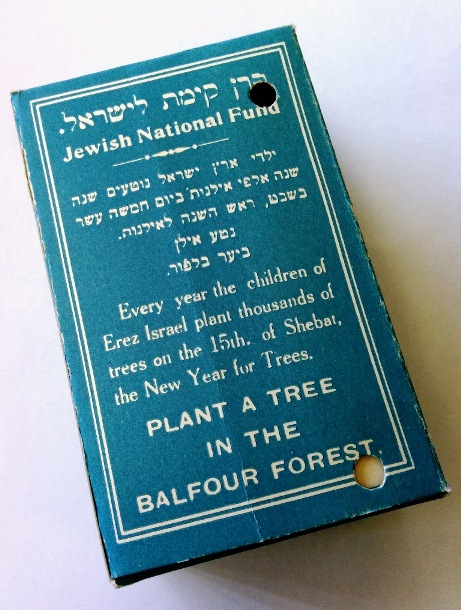
Tu Bishvat is another festival that acquired a different character after the renewed Jewish settlement in Palestine at the end of the 19th century. According to Jewish tradition, Tu Bishvat, which is marked on 15th of Shvat, determines the age of the trees and if their fruits are edible. The custom of tree-planting began with the initiative of the educator and historian Ze'ev Yavetz. He took students of the school he headed in Zichron Ya'akov to plant trees on Tu Bishvat in 1892. The idea spread all over the country, and was institutionalized on 1908 by the Jewish National Fund and the Teachers Union.
While tree planting on Tu Bishvat became a custom in Palestine, in overseas communities the Jewish National Fund (JNF) used the date for propaganda and fund raising. The Head Office of the JNF in Jerusalem sent a letter to the other offices on 1928 with a description of the activities planned for Tu Bishvat. Volunteers went from house to house in the Jewish communities and sold boxes of fruits from Palestine. The Jewish schools dedicated the day to Palestine, and the Blue Box was placed in the classroom for donations. That year the JNF also prepared a set of photographs for display, and a movie about Tu Bishvat, and sent articles to the Jewish press with information about the forests that were planted during the previous year.
The JNF planted forests not just on Tu Bishvat. Many Jews contributed money for tree-planting in Palestine in order to mark special events, such as birthdays, bar mizvahs, weddings, the death of a loved one, and more. Thanks to the tree-planting there are more trees in Israel today than there were 100 years ago – unlike other countries in the world!
JNF activities for Tu Bishvat of the year 1928-1929 are shown in the documents and photographs below.